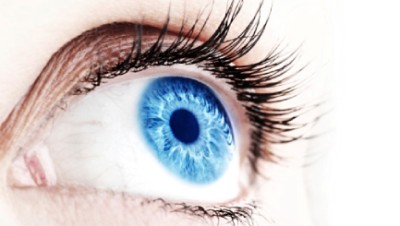Cataracts are the most common cause of vision loss in people over the age of 40, and are usually related to aging. Simply put, cataracts are a clouding on the lens of the eye. This clouding is caused by a buildup of protein in the eyes, which can eventually block your vision.
The Symptoms
Luckily, cataracts are not difficult to diagnose and can be treated. Here are five early warning signs of cataracts to watch out for:
- Blurred or Cloudy Vision. Cataracts are a film over the lens of your eye. When they begin forming, your vision will change like you’re looking through a filter. This will likely cause blurring.
- Glare. Cataracts can catch and reflect light. You may begin to see halos around light sources or experience a glare.
- Changes in Color. Because cataracts act like a filter on your eye, colors may appear dim or muted.
- Double Vision. Though less common, cataracts can cause a refraction in the lens of your eye, giving you double vision.
- Changes in Vision. If you experience any sudden changes in your vision prescription, it may indicate the growth of a cataract.
Because there are several types of cataracts, you may not experience all of these symptoms, or your symptoms may develop over a long period of time.
Talking to Your Doctor about Cataracts
If you experience any of the above symptoms, you’ll want to schedule an eye exam as soon as possible. Your optometrist will be able to diagnose cataracts, though you may need to see an eye doctor such as those with Eyeconx in Calgary about your treatment options.
According to the National Eye Institute, optometrists use any of the following three tests to determine whether or not a cataract is present:
- Visual Acuity. In this generic test, your optometrist will have you relay data from a chart at various distances to determine if there are any changes in your eyesight.
- Dilated Eye Exam. Eye drops are used to dilate your pupils. Your optometrist will then examine your retina with a special magnifying glass to look for any anomalies.
- Tonometry. During this test, your optometrist will use an instrument to raise the pressure in your eye and monitor the changes. Your eye may be numbed during this procedure.
Once you have been diagnosed with cataracts, your eye care professional will discuss your treatment options.
Treatment Options
In their early stages, cataracts can be counteracted through making some simple changes. These may include incorporating brighter lighting into your home or office space, using magnifiers, or investing in anti-glare eyewear. These modifications will depend on the symptoms you are experiencing.
Cataract removal is typically only considered if the cataract begins to interfere with everyday life, unless it prevents treatment of another eye condition.
Preventative Measures
Following a healthy diet and protecting your eyes from exposure to sunlight with sunglasses and hats will help prevent degenerative problems like cataracts.
It is recommended that you have an eye exam every one-to-three years. Your risk of developing serious eyes conditions increases with age, and you will want to schedule eye exams more frequently.
As you age, it is vital that you remain conscientious of your eye health. Note any changes you experience in your vision and bring up your concerns with your doctor. Proactive action can prevent cataracts from interfering with your daily life.
